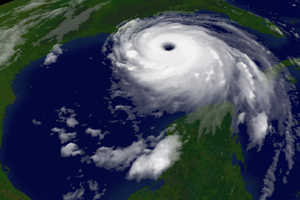It looked like something out of a Hollywood movie. Major portions of the city of New Orleans were underwater. Beyond the city were incredible scenes of devastation along the central Gulf Coast from Louisiana to Alabama.
While it might have looked like a movie scene, it was a painful reality. And it happened 10 years ago this month when Hurricane Katrina roared ashore and the levees failed.
The numbers from Katrina are staggering: Nearly 2,000 killed; hundreds of thousands of people in Louisiana, Mississippi, and Alabama displaced; and, more than $100 billion in damage. Katrina turned out to be one of the worst natural disasters in American history.
New Orleans is a city at greater risk for natural disaster. Sitting on the Gulf Coast, much of its land below sea level. It is highly vulnerable to tropical storms and flooding. Its vulnerability is not unique. There are communities all across the country that face higher risks: Coastal communities; cities and towns located in flood-prone areas or along fault lines; and, cities with large populations to serve in a disaster.
These communities need to implement the lessons learned the hard way after Katrina. In fact, all communities should prepare for potential disasters. Those where leaders know they are at greater risk need to take action.
Nonprofits can play a large role in making that happen, whether global or national relief organizations, foundations, or local service providers. Communities need to have a response plan in place before a disaster. Nonprofits can play a role in that planning, encouraging community leaders to take the risk seriously and working with them to develop an effective plan.
Nonprofit leaders need a plan for their organizations, too. How will they respond when a disaster strikes? How will they handle an influx of donations or volunteers? How can service providers make sure any interruption of service is as limited as possible?
The need for resilient communities. A crucial part of planning for disasters is ensuring that physical infrastructure and support systems, such as civic and faith organizations, can withstand or bounce back from a disaster and be used in the recovery process. This is an area where nonprofits can work with communities to build more resilience. Nonprofits also need to be more resilient, ensuring that physical plants and functional systems can be of maximum help during disaster recovery.
Donations need to be used effectively for full recovery. Nonprofits are often flooded with money, donations, and volunteers when disaster strikes. Those often dry up once attention focuses elsewhere. Mid- and long-term recovery needs then go unmet due to lack of resources.
Managers at nonprofits that fund relief should recognize the importance of funding for full recovery after a disaster, not just the immediate need. Funders should anticipate what could happen during the next few years after the disaster and provide resources to meet those needs.
Katrina was the impetus for the founding of the Center for Disaster Philanthropy, a 365-day-a-year resource for private philanthropy for disaster recovery. Today, the philanthropy community is making great strides to be more effective in shortening the disaster recovery period.
Hurricane Katrina was an immense tragedy not just for New Orleans and the Gulf Coast but the entire nation. It gave us an opportunity to learn how to prepare for and recover from the next major disaster to strike. And it will only be a matter of time before that happens.
Bob Ottenhoff is president and CEO of the Center for Disaster Philanthropy in Washington, D.C. His email is [email protected]
